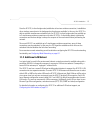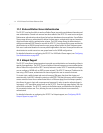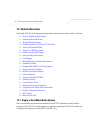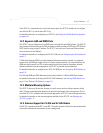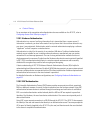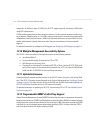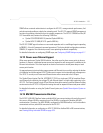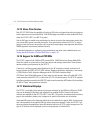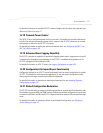
AP-5131 Introduction
1-11
An MU is not able to access the network if not authenticated. When configured for EAP support, the
access point displays the MU as an EAP station.
EAP is only supported on mobile devices running Windows XP, Windows 2000 (using Service Pack #4)
and Windows Mobile 2003. Refer to the system administrator for information on configuring a Radius
Server for EAP (802.1x) support.
For detailed information on EAP configurations, see Configuring 802.1x EAP Authentication on page
6-11.
1.2.8.3 WEP Encryption
All WLAN devices face possible information theft. Theft occurs when an unauthorized user
eavesdrops to obtain information illegally. The absence of a physical connection makes wireless links
particularly vulnerable to this form of theft. Most forms of WLAN security rely on encryption to
various extents. Encryption entails scrambling and coding information, typically with mathematical
formulas called algorithms, before the information is transmitted. An algorithm is a set of instructions
or formula for scrambling the data. A key is the specific code used by the algorithm to encrypt or
decrypt the data. Decryption is the decoding and unscrambling of received encrypted data.
The same device, host computer or front-end processor, usually performs both encryption and
decryption. The data transmit or receive direction determines whether the encryption or decryption
function is performed. The device takes plain text, encrypts or scrambles the text typically by
mathematically combining the key with the plain text as instructed by the algorithm, then transmits
the data over the network. At the receiving end, another device takes the encrypted text and decrypts,
or unscrambles, the text revealing the original message. An unauthorized user can know the
algorithm, but cannot interpret the encrypted data without the appropriate key. Only the sender and
receiver of the transmitted data know the key.
Wired Equivalent Privacy (WEP) is an encryption security protocol specified in the IEEE Wireless
Fidelity (Wi-Fi) standard, 802.11b and supported by the AP-5131 AP. WEP encryption is designed to
provide a WLAN with a level of security and privacy comparable to that of a wired LAN. The level of
protection provided by WEP encryption is determined by the encryption key length and algorithm. An
encryption key is a string of case sensitive characters used to encrypt and decrypt data packets
transmitted between a mobile unit (MU) and the AP-5131. An AP-5131 and associated wireless
clients must use the same encryption key (typically 1 through 4) to interoperate.
For detailed information on WEP configurations, see Configuring WEP Encryption on page 6-16.



